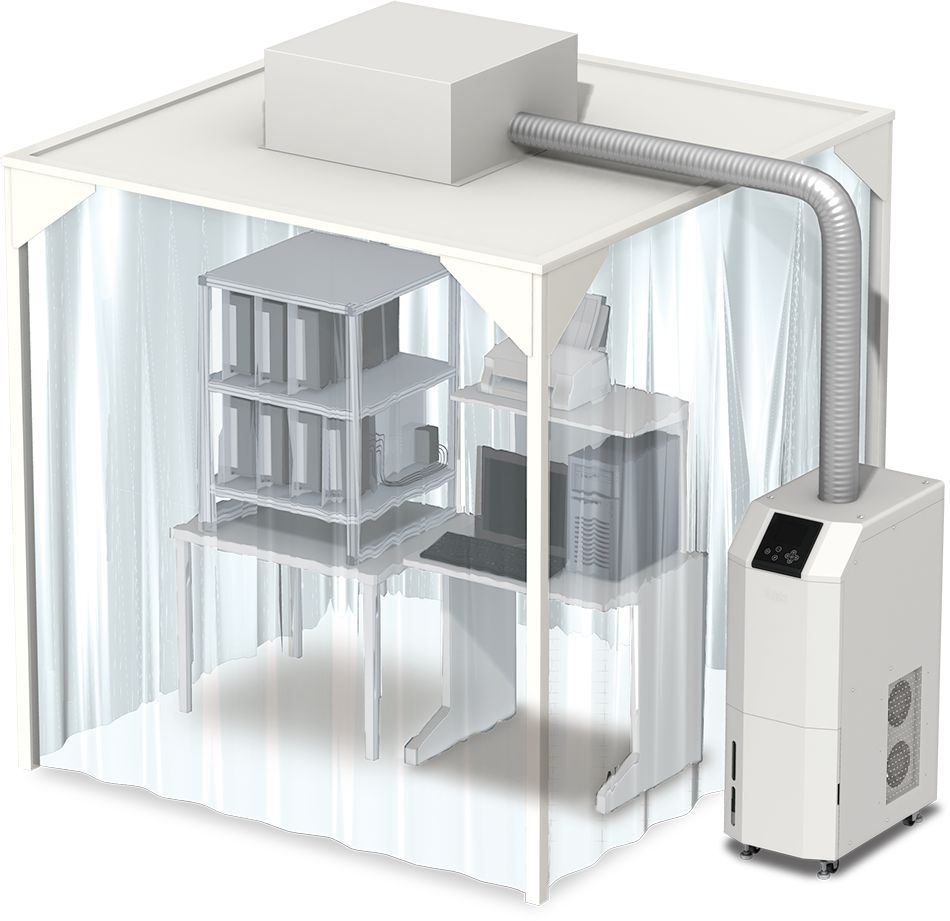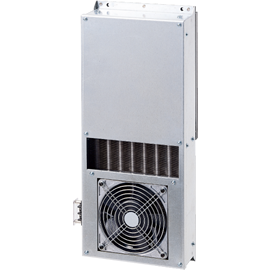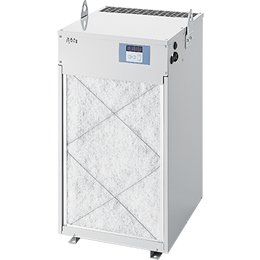Clean booth selection and installation know-how

This site provides easy-to-understand explanations of know-how for selecting and installing a clean booth, as well as know-how for upgrading a simple booth into a high-stability temperature-precision air conditioner (TCU/ECU) booth and constant temperature and humidity booth using local precision air conditioning units.
Table of Contents [display]
- Clean Booth
- Benefits of introducing a clean booth
- Points to note when installing a clean booth
- Temperature distribution inside the clean booth
- How to select a clean booth
- 2. Temperature and humidity control in the clean booth (checkpoints)
- 3. Target space size
- 4. Required cleanliness and ventilation rate
- 5. Number of clean fan filter unit and cleanliness distribution
- 6. Clean booth materials (frame/sheet and partition)
- 7. Other specification and functions (lighting/switches/breakers/entrances/air conditioning, etc.)
- Easily upgrade your clean booth to a temperature-controlled booth/constant temperature and humidity booth
Clean Booth
Unlike full-scale clean rooms, clean booths are energy-saving, low-cost, and simple environmental products that divide the space with vinyl sheets or acrylic panels, and are equipped with a fan filter unit (FFU) with a built-in environment filter, which keeps the interior positive pressure while preventing the intrusion of dust, foreign objects, particles, etc. from the outside, achieving a cleanliness level that corresponds to the air volume and ventilation rate. Simple clean booths are mainly made of vinyl sheets.
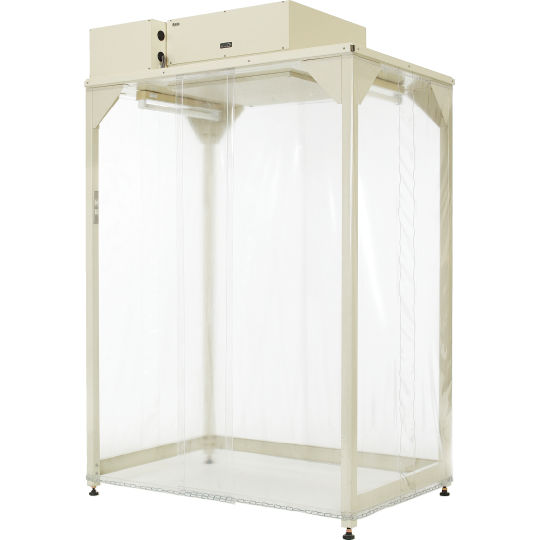

Benefits of introducing a clean booth
The merit of introducing a clean booth can be summed up simply as creating a clean room environment with ease. It also has the following advantages:
- Low cost
- Short delivery time
- Easy to install and move
- Energy and power saving
Points to note when installing a clean booth
When installing a clean booth, you should pay attention to the following points, as installing it without considering them can lead to unexpected problems.
[Temperature issue]
Example 1. The ambient temperature of the clean booth varies greatly between summer and winter (hot and cold), so the temperature inside the clean booth fluctuates greatly throughout the year.
Example 2: The surrounding air conditioning does not cool the inside of the clean booth, causing the temperature inside the clean booth to rise and become hot.
Example 3: The inside of the clean booth becomes hot due to radiant heat from nearby equipment.
Example 4: The exhaust heat from the motors of the equipment inside the clean booth makes the inside of the clean booth hot.
Example 5. Due to the presence of several workers and lighting, the temperature and humidity rise, making it muggy while working.
<Solution>
Adjust the temperature and humidity settings of the floor air conditioner or other equipment until the inside of the clean booth is comfortable.
Direct the air flow of the floor air conditioner toward the clean booth.
Proposal 3: Significantly increase the cooling and heating capacity of the floor air-conditioning unit, etc.
Plan 4: Take measures to block heat from entering the clean booths.
Proposal 5. up the ventilation capacity to exhaust the heat generated in the clean booth.
Proposal 6. install spots precision air conditioner (TCU/ECU) that can be easily retrofitted.
Related link: Case studies | Precision air conditioning and local air conditioning | Apiste Co., Ltd.
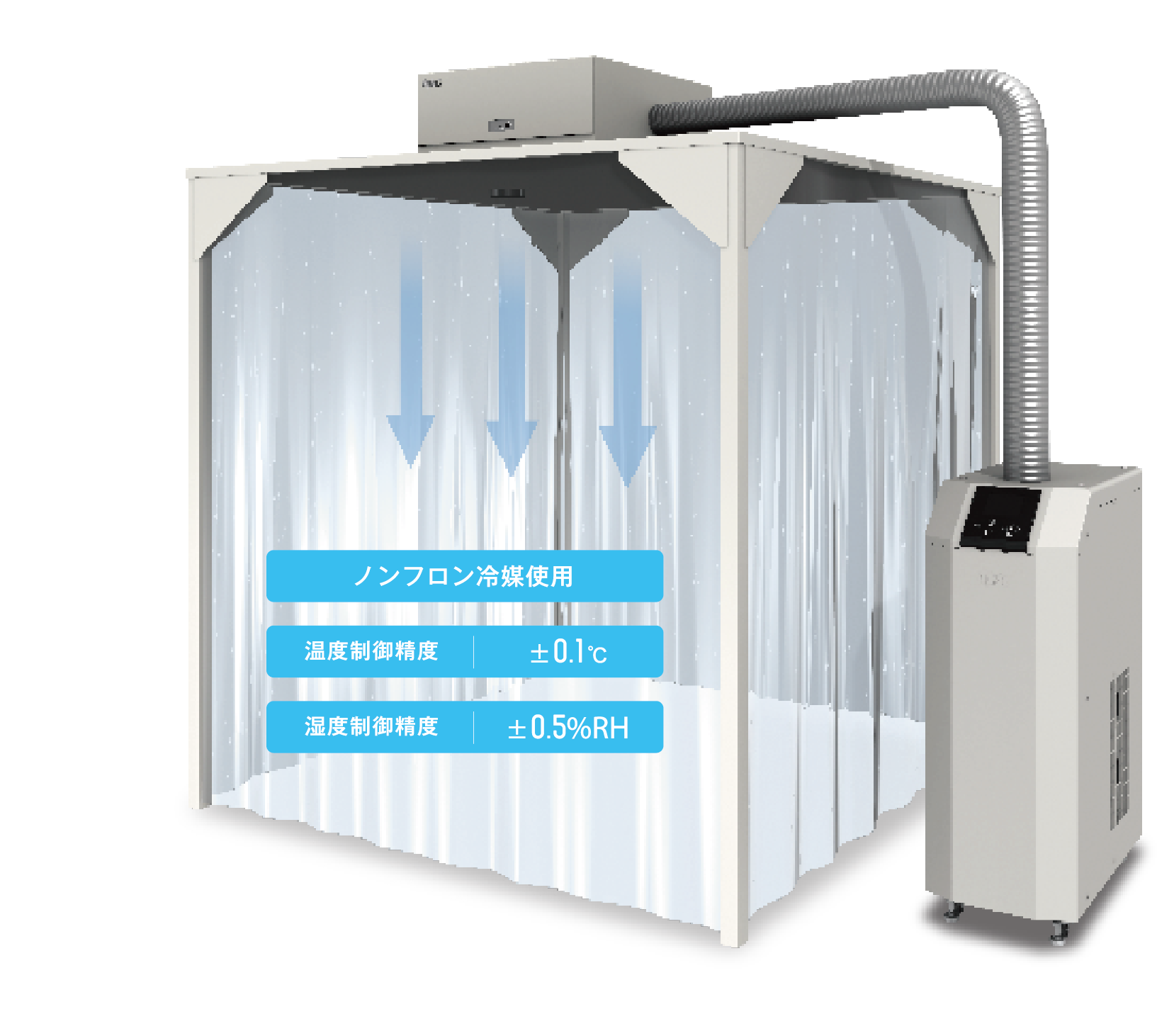
Temperature distribution inside the clean booth
The temperature distribution inside a clean booth is affected by the following conditions:
- Ambient temperature changes
- Temperature change of outside air intake
- Radiant heat from the surroundings
- Heat sources and operating conditions in the clean booth
- Clean booth heat exhaust and ventilation status
- Clean booth surface material and heat transfer coefficient
Let's look at the temperature distribution inside the clean booth from the test results below.
<Test Contents>
The ventilation rate was changed and the temperatures at nine points in the booth were measured and compared.
<Measurement conditions>
- Booth dimensions: H2080 x W1580 x D700 (volume: 2.3m²)
- Air conditioning model: PAU-GR800SE-HC
- ambient environment: 24°C/35% (with general air conditioning)
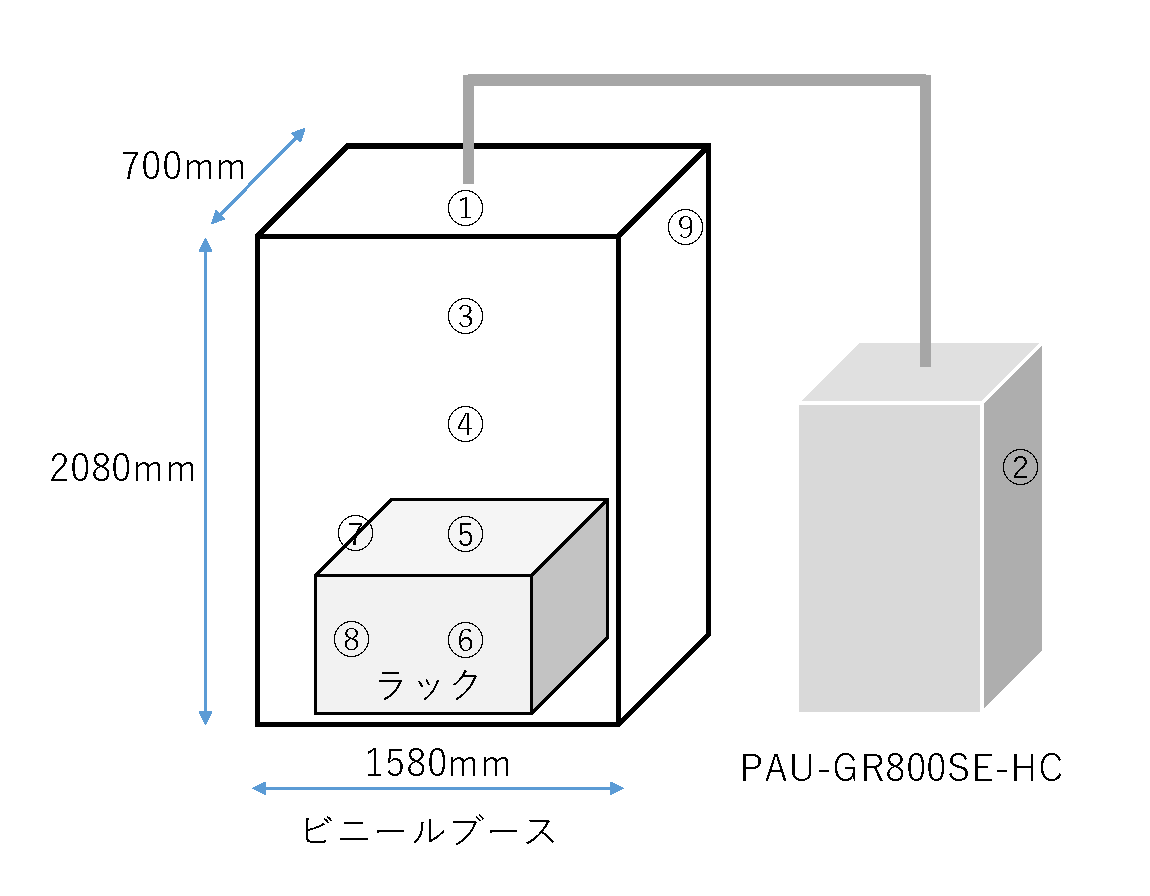
<Consideration>
- The temperature stability at the outlet remains the same even with different ventilation rates (±0.1°C).
- The greater the distance from the outlet, the greater the temperature fluctuations.
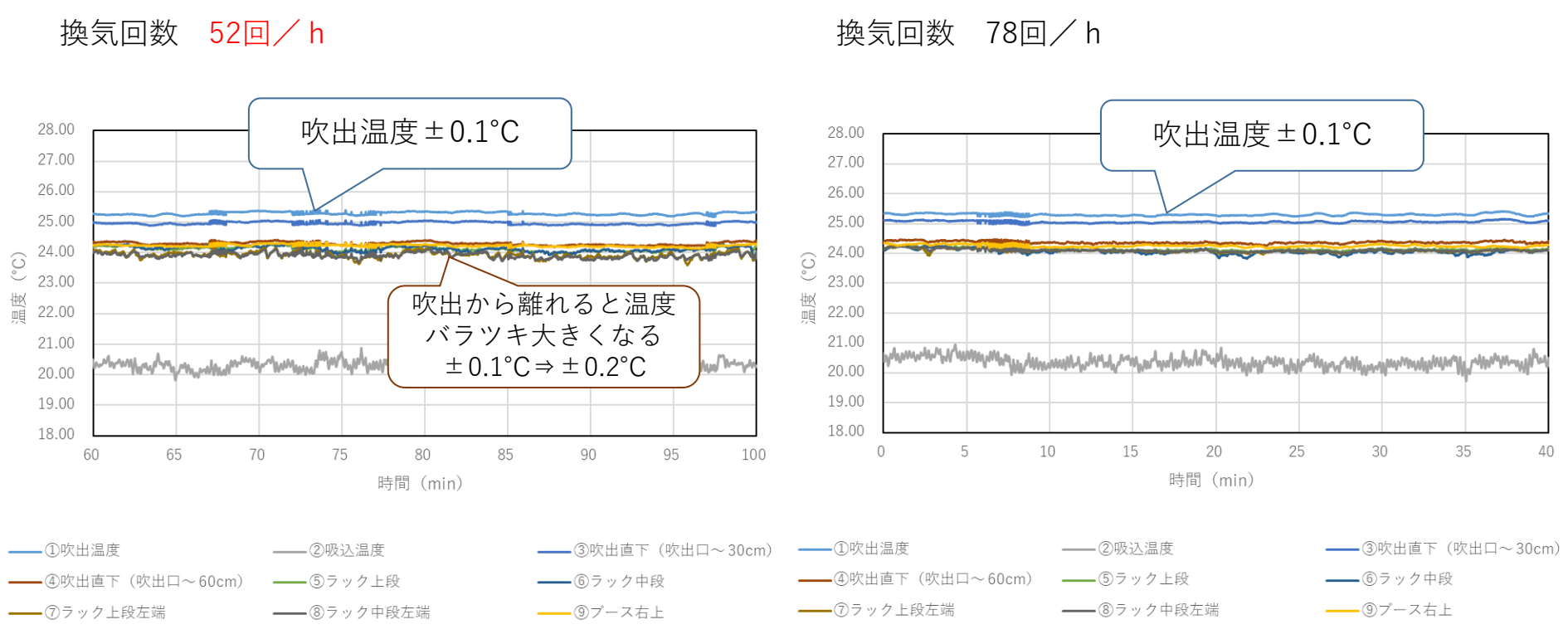
How to select a clean booth
1. Surrounding installation environment (checkpoints)
First, check environment of the installation location (dust level, air conditioning conditions).
- Avoid locations with a lot of dust where the HEPA filter in the clean fan unit is likely to become clogging.
- In places without air conditioning, the temperature inside the clean booth rises, especially in the summer, and the humidity rises during the rainy season, causing discomfort to workers and affecting production quality and yield.
2. Temperature and humidity control in the clean booth (checkpoints)
The temperature inside the clean booth rises due to people, equipment, lighting, etc., so the estimated heat generation must be considered. Temperature and humidity control is important to stabilize the physical properties and characteristics of samples and raw materials.
- Temperature control: The temperature inside the booth is kept constant by cooling/heating/dehumidifying. (Constant temperature)
- Temperature and humidity control: The temperature and humidity inside the booth are maintained constant by cooling, heating, dehumidifying, and humidifying (constant temperature and humidity).
- Temperature and dehumidification control: The temperature and humidity inside the booth are maintained in a dry room by cooling/heating/+dehumidification. (Dry)
3. Target space size
The desired height x width x depth (mm) will be determined based on the installation location. However, size restrictions may arise depending on the strength and structure of the frame, such as beams and pillars. We recommend consulting with the clean booth manufacturer in advance.
4. Required cleanliness and ventilation rate
To satisfy the required cleanliness level, the required ventilation rate for each class must be met. Each cleanliness class has a set target ventilation rate per hour.
If the ventilation rate is too low, the unit will be vulnerable to turbulence when entering and exiting, which will increase recovery time and cause deterioration over time, resulting in a decrease in cleanliness.
Also, if the ventilation rate is too high, vinyl sheets may swell and stir up dust around them.
5. Number of clean fan filter unit and cleanliness distribution
The cleanliness inside the clean booth can be met by installing a clean fan filter unit with an air volume appropriate for the required ventilation frequency.
However, the cleanliness inside the clean booth will be poor except in the area of clean air from clean fan filter unit. Therefore, if uniformity of cleanliness distribution is desirable, use multiple units of clean fans filter unit and increase the number of blowing points to improve the cleanliness distribution.
6. Clean booth materials (frame/sheet and partition)
Common frame materials include aluminum, steel, and stainless steel.
- If heat intrusion or radiant heat from the surrounding area is expected, choose a material with a high heat-blocking effect.
- The aluminum frame is strong, appearance great and is lightweight.
- Steel frames are stronger and less expensive, but are more susceptible to rust and peeling paint.
- The stainless steel frame is highly corrosion-resistant and clean, making it suitable for the pharmaceutical and food industries.
The materials used for the sheets and partitions vary depending on the application and purpose, and include vinyl sheets, acrylic panels, aluminum panels, and heat-insulating panels.
The Fire Service Act requires that seat materials be non-flammable or flame-retardant.
In addition, when using paints, adhesives, or sealants, caution is required regarding the generation of VOC (volatile organic compound) gases in some electronic component manufacturing processes. We recommend consulting with the clean booth manufacturer in advance.
7. Other specification and functions (lighting/switches/breakers/entrances/air conditioning, etc.)
Other factors that need to be considered include whether or not lighting is required and the required illumination level, power supply switches and their installation locations, whether or not there is a circuit breaker, specification of the entrances and exits, and air conditioning within the clean booth.
Easily upgrade your clean booth to a temperature-controlled booth/constant temperature and humidity booth
Apiste 's "precision air conditioner (TCU/ECU) for Booths" (Temperature/Humidity/Dry) that can be easily retrofitted
- With our immediate delivery system, you can quickly create a high-stability environment.
- Installation is easy! First, just connect the duct and electricity.
- This reduces the environment impact and significantly reduces costs and time.
<Installation work flow image>

Improve your factory's manufacturing quality through air conditioning!
Apiste 's precision air conditioner (TCU/ECU) PAU series improves yield and manufacturing quality cost-effectively.
- High-stability temperature control at low cost
- Want to control temperature and humidity for each process?
- More efficient than overall or a full-scale clean room
I want to save energy
